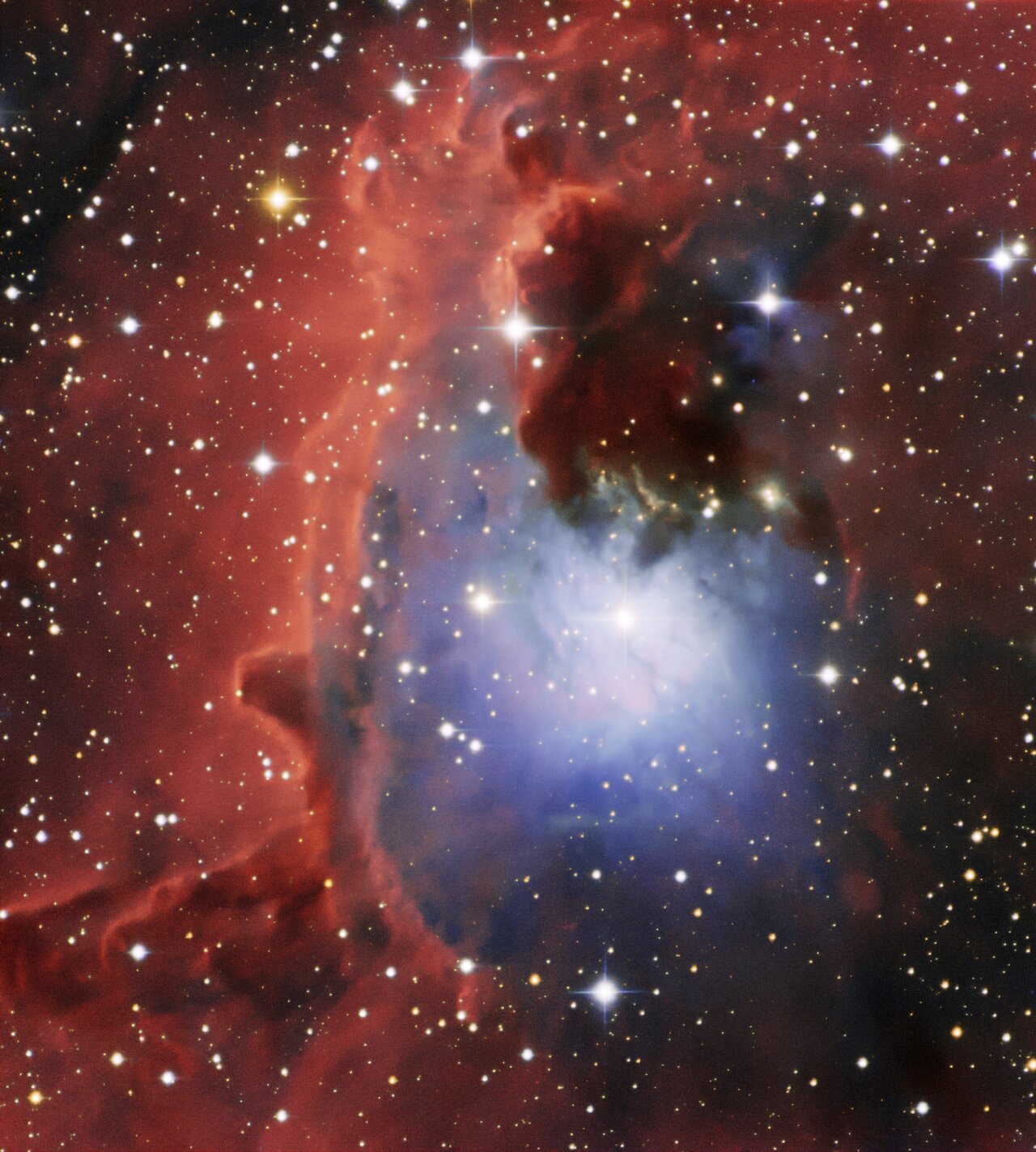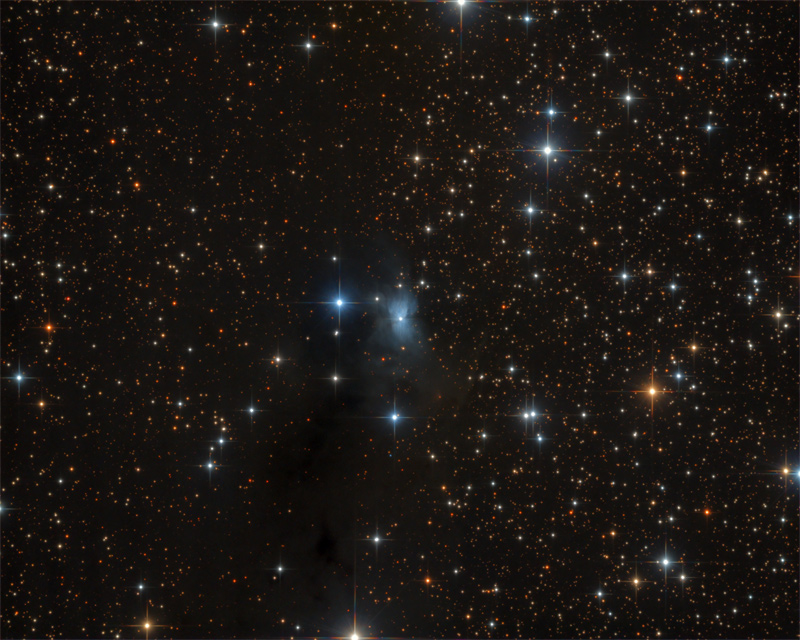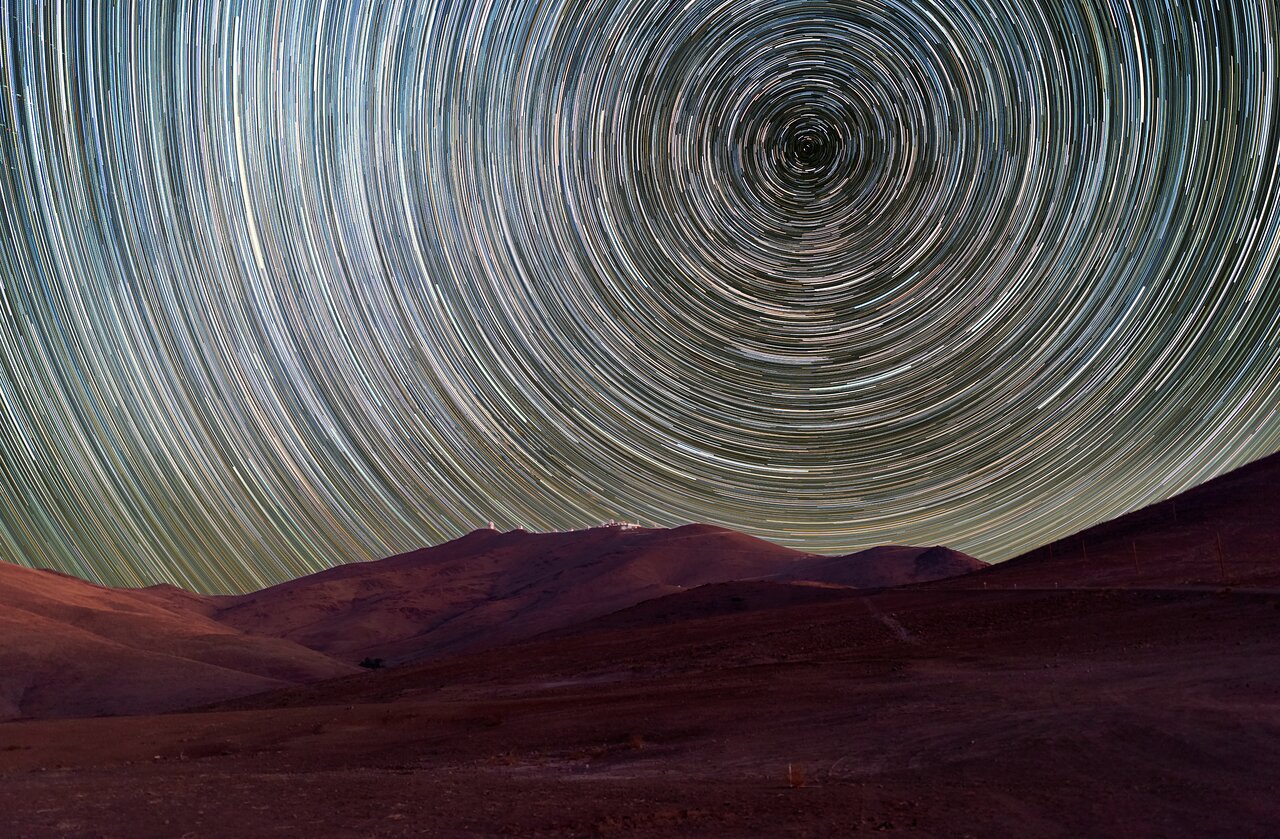Found Images: 2021 December
Found Images: 2021 December
Have you seen a great image or video somewhere that you think would make a great APOD? Nominate it for APOD! Please post as much information here as you have about the image/video with a link to any source(s) for it you know of here, and the editors will take a look.
When posting the image itself, please do not post anything larger than a thumbnail here; please honor the copyright holder's copyright.
Please keep hotlinked images under 500K.
Thank you!
<< Previously
Know the quiet place within your heart and touch the rainbow of possibility; be
alive to the gentle breeze of communication, and please stop being such a jerk. — Garrison Keillor
alive to the gentle breeze of communication, and please stop being such a jerk. — Garrison Keillor
-
starsurfer
- Stellar Cartographer
- Posts: 5409
- Joined: Thu Mar 15, 2012 7:25 pm
Re: Found Images: 2021 December
Toby Jug Nebula (IC 2220)
https://www.hansonastronomy.com/ic2220toby-jug
Data: Martin Pugh
Processing: Mark Hanson
https://www.hansonastronomy.com/ic2220toby-jug
Data: Martin Pugh
Processing: Mark Hanson
-
starsurfer
- Stellar Cartographer
- Posts: 5409
- Joined: Thu Mar 15, 2012 7:25 pm
Re: Found Images: 2021 December
PaStDr 9
https://www.astrobin.com/2hxz9g/
Data: Andreas Zirke
Processing: Marcel Drechsler More can be read about this discovery here.
https://www.astrobin.com/2hxz9g/
Data: Andreas Zirke
Processing: Marcel Drechsler More can be read about this discovery here.
-
starsurfer
- Stellar Cartographer
- Posts: 5409
- Joined: Thu Mar 15, 2012 7:25 pm
-
starsurfer
- Stellar Cartographer
- Posts: 5409
- Joined: Thu Mar 15, 2012 7:25 pm
-
starsurfer
- Stellar Cartographer
- Posts: 5409
- Joined: Thu Mar 15, 2012 7:25 pm
Re: Found Images: 2021 December
Longmore 3
https://www.chart32.de/index.php/component/k2/item/385
Copyright: CHART32
Processing: Johannes Schedler
https://www.chart32.de/index.php/component/k2/item/385
Copyright: CHART32
Processing: Johannes Schedler
-
starsurfer
- Stellar Cartographer
- Posts: 5409
- Joined: Thu Mar 15, 2012 7:25 pm
-
starsurfer
- Stellar Cartographer
- Posts: 5409
- Joined: Thu Mar 15, 2012 7:25 pm
ESO: La Silla’s New Gem (BlackGEM)
La Silla’s New Gem
ESO Picture of the Week | 2021 Dec 06
ESO Picture of the Week | 2021 Dec 06
This family portrait of the telescopes residing at ESO’s La Silla Observatory was captured in 2019 during the breathtaking sunset over the outskirts of Chilean Atacama Desert.
Standing tall at the front of the portrait is one of La Silla’s new family members: BlackGEM, an array of optical telescopes which will join soon the search for some of the most powerful and dramatic events in the Universe, such as merging neutron stars and black holes. This robotic array was developed by Radboud University (from where it is remotely controlled), the Netherlands Research School for Astronomy (NOVA), and the KU Leuven.
These exotic events cause ripples in the fabric of spacetime known as gravitational waves. BlackGEM will work together with gravitational wave detectors such as LIGO and Virgo to pinpoint in visible light the sources responsible for gravitational waves. This will allow for bigger telescopes — such as ESO’s Very Large Telescope (VLT) — to carry out detailed follow-up observations. This will provide astronomers with insight into some of the most extreme events in the universe and help unveil the mysteries of the cosmos.
Know the quiet place within your heart and touch the rainbow of possibility; be
alive to the gentle breeze of communication, and please stop being such a jerk. — Garrison Keillor
alive to the gentle breeze of communication, and please stop being such a jerk. — Garrison Keillor
ESA: Four Filter Fusion (NCG 7329)
Four Filter Fusion
ESA Hubble Picture of the Week | 2021 Dec 06
ESA Hubble Picture of the Week | 2021 Dec 06
This stellar whirlpool is a spiral galaxy named NCG 7329, which has been imaged by Hubble’s Wide Field Camera 3 (WFC3). Creating a colourful image such as this one using a telescope such as Hubble is not as straightforward as pointing and clicking a camera. Commercial cameras will typically try to collect as much light of all visible wavelengths as they can, in order to create the most vibrant images possible. In contrast, raw images collected by Hubble are always monochromatic, because astronomers typically want to capture very specific ranges of wavelengths of light at any time, in order to do the best, most accurate science possible. In order to control which wavelengths of light will be collected, Hubble’s cameras are equipped with a wide variety of filters, which only allow certain wavelengths of light to reach the cameras’ CCDs (a CCD is a camera’s light sensor — phone cameras also have CCDs!).
How are the colourful Hubble images possible given that the raw Hubble images are monochromatic? This is accomplished by combining multiple different observations of the same object, obtained using different filters. This image, for example, was processed from Hubble observations made using four different filters, each of which spans a different region of the light spectrum, from the ultraviolet to optical and infrared. Specialised image processors and artists can make informed judgements about which optical colours best correspond to each filter used. They can then colour the images taken using that filter accordingly. Finally, the images taken with different filters are stacked together, and voila! The colourful image of a distant galaxy is complete, with colours as representative of reality as possible.
Know the quiet place within your heart and touch the rainbow of possibility; be
alive to the gentle breeze of communication, and please stop being such a jerk. — Garrison Keillor
alive to the gentle breeze of communication, and please stop being such a jerk. — Garrison Keillor
Re: Found Images: 2021 December
Moon and Zodiacal light at AstroQueyras
Copyright : Maxime Oudoux
https://maximeoudouxphotographie.fr/
Here is the view from the french observatory of AstroQueyras (3000m above sea level) with one of the astronomer of the complex, Jean-François Gely.
Jean-François watches the superb setting of the crescent moon on the horizon. Our natural satellite is extremely bright at this altitude and illuminates the ground so well that we can walk in the snow with virtually no headlamps.
Right next to it, we observe the zodiacal light (even with the moon light), aligned with Mars (the orange star in the upper left of the pic)
The Andromeda (the largest) and M33 (smaller, the spot in the top center) galaxies are particularly visible in this exceptional sky, among the purest in Europe.
Gear and settings:
Nikon D750 Astrodon
Tokina 50mm f / 1.4 Opera
Panoramic head Nodal Ninja VI RD-16 II
Panoramic of approximately 45 images
Mercator projection (hence the distortion on the right part as well as the upper part of the image, the galaxies are enlarged)
All images are taken from the same location, at the same time, with the same focal length.
Ground: 15s, f / 2.8, 2500ISO, 50mm
Sky: 6s, f / 2, 2500ISO, 50mm
Processing on DxO Photolab 5, AutoPano Giga 4.4.2 and Photoshop CC 2022
Taken in January 2021.
Copyright : Maxime Oudoux
https://maximeoudouxphotographie.fr/
Here is the view from the french observatory of AstroQueyras (3000m above sea level) with one of the astronomer of the complex, Jean-François Gely.
Jean-François watches the superb setting of the crescent moon on the horizon. Our natural satellite is extremely bright at this altitude and illuminates the ground so well that we can walk in the snow with virtually no headlamps.
Right next to it, we observe the zodiacal light (even with the moon light), aligned with Mars (the orange star in the upper left of the pic)
The Andromeda (the largest) and M33 (smaller, the spot in the top center) galaxies are particularly visible in this exceptional sky, among the purest in Europe.
Gear and settings:
Nikon D750 Astrodon
Tokina 50mm f / 1.4 Opera
Panoramic head Nodal Ninja VI RD-16 II
Panoramic of approximately 45 images
Mercator projection (hence the distortion on the right part as well as the upper part of the image, the galaxies are enlarged)
All images are taken from the same location, at the same time, with the same focal length.
Ground: 15s, f / 2.8, 2500ISO, 50mm
Sky: 6s, f / 2, 2500ISO, 50mm
Processing on DxO Photolab 5, AutoPano Giga 4.4.2 and Photoshop CC 2022
Taken in January 2021.
-
starsurfer
- Stellar Cartographer
- Posts: 5409
- Joined: Thu Mar 15, 2012 7:25 pm
Re: Found Images: 2021 December
Sh2-174
http://deeplook.astronomie.at/sh2-174%20alkor.htm
Copyright: Markus Blauensteiner http://deeplook.astronomie.at/sh2-174%20mizar.htm
http://deeplook.astronomie.at/sh2-174%20alkor.htm
Copyright: Markus Blauensteiner http://deeplook.astronomie.at/sh2-174%20mizar.htm
-
starsurfer
- Stellar Cartographer
- Posts: 5409
- Joined: Thu Mar 15, 2012 7:25 pm
-
starsurfer
- Stellar Cartographer
- Posts: 5409
- Joined: Thu Mar 15, 2012 7:25 pm
Re: Found Images: 2021 December
Bubble Nebula (NGC 7635) and M52
https://delsaert.com/2018/10/07/a-star- ... -a-bubble/
Copyright: Bart Delsaert
https://delsaert.com/2018/10/07/a-star- ... -a-bubble/
Copyright: Bart Delsaert
-
starsurfer
- Stellar Cartographer
- Posts: 5409
- Joined: Thu Mar 15, 2012 7:25 pm
Re: Found Images: 2021 December
NGC 2626
https://noirlab.edu/public/images/iotw2115a/
Copyright: CTIO/NOIRLab/NSF/AURA/SMARTS Consortium
Processing: T. A. Rector (University of Alaska Anchorage/NSF’s NOIRLab), M. Zamani & D. de Martin (NSF’s NOIRLab)
https://noirlab.edu/public/images/iotw2115a/
Copyright: CTIO/NOIRLab/NSF/AURA/SMARTS Consortium
Processing: T. A. Rector (University of Alaska Anchorage/NSF’s NOIRLab), M. Zamani & D. de Martin (NSF’s NOIRLab)
-
starsurfer
- Stellar Cartographer
- Posts: 5409
- Joined: Thu Mar 15, 2012 7:25 pm
Re: Found Images: 2021 December
ESO: Into the Vortex (La Silla)
Into the Vortex
ESO Picture of the Week | 2021 Dec 13
ESO Picture of the Week | 2021 Dec 13
This week’s picture may just hypnotise you! Resembling a vortex or an optical illusion, the starry circles draw you deeper into this breathtaking mountainous landscape of Chile’s Atacama Desert, home to ESO's La Silla Observatory.
Each circular streak represents an individual star which maps out a star trail. Such trails are due to Earth’s rotation, which causes the stars to seemingly move across the sky, slowly tracing out perfect rings centred on the south celestial pole as they do so. A photograph like this therefore requires a long exposure to capture the passage of time.
La Silla is located some 2400 metres above sea level, and offers perfect observing conditions for long-exposure shots like this; the site experiences over 300 clear nights a year!
Here, ESO operates two of the most productive 4-metre class telescopes in the world: the ESO 3.6-metre telescope which is home to the world's foremost extrasolar planet hunter, the High Accuracy Radial velocity Planet Searcher (HARPS), and the 3.58-metre New Technology Telescope (NTT), which played a key role in the development of active optics, a technique that paved the way for building even larger telescopes.
Know the quiet place within your heart and touch the rainbow of possibility; be
alive to the gentle breeze of communication, and please stop being such a jerk. — Garrison Keillor
alive to the gentle breeze of communication, and please stop being such a jerk. — Garrison Keillor
ESA: Hubble Gazes Sidelong at NGC 3568
Hubble Gazes Sidelong at NGC 3568
ESA Hubble Picture of the Week | 2021 Dec 13
ESA Hubble Picture of the Week | 2021 Dec 13
In this image, the NASA/ESA Hubble Space Telescope captures a side-on view of NGC 3568, a barred spiral galaxy roughly 57 million light-years from the Milky Way in the constellation Centaurus. In 2014 the light from a supernova explosion in NGC 3568 reached Earth — a sudden flare of light caused by the titanic explosion accompanying the death of a massive star. Whilst most astronomical discoveries are the work of teams of professional astronomers, this supernova was discovered by amateur astronomers from the Backyard Observatory Supernova Search (BOSS) in New Zealand. Dedicated amateur astronomers often make intriguing discoveries — particularly of fleeting astronomical phenomena such as supernovae.
This Hubble observation comes from a hoard of data built up to pave the way for future science with the upcoming NASA/ESA/CSA James Webb Space Telescope (JWST). By combining ground-based observations with data from Hubble’s Advanced Camera for Surveys (ACS) and Wide Field Camera 3 (WFC3), astronomers have built a treasure trove of data on the connections between young stars and the clouds of cold gas in which they form. One of Webb’s key science goals is to explore the life cycle of stars — particularly how and where stars are born. Since Webb observes at infrared wavelengths, it will be able to peer through the clouds of gas and dust in stellar nurseries and observe the fledgling stars within. Webb’s superb sensitivity will even allow astronomers to directly investigate faint protostellar cores — the earliest stages of star birth.
Know the quiet place within your heart and touch the rainbow of possibility; be
alive to the gentle breeze of communication, and please stop being such a jerk. — Garrison Keillor
alive to the gentle breeze of communication, and please stop being such a jerk. — Garrison Keillor
-
starsurfer
- Stellar Cartographer
- Posts: 5409
- Joined: Thu Mar 15, 2012 7:25 pm
-
starsurfer
- Stellar Cartographer
- Posts: 5409
- Joined: Thu Mar 15, 2012 7:25 pm
-
starsurfer
- Stellar Cartographer
- Posts: 5409
- Joined: Thu Mar 15, 2012 7:25 pm
Re: Found Images: 2021 December
Orion Nebula (M42)
https://www.astrobin.com/l0spg9/
Copyright: Miguel Angel Garcia Borrella/Antonio Perez/Luis Romero Ventura
https://www.astrobin.com/l0spg9/
Copyright: Miguel Angel Garcia Borrella/Antonio Perez/Luis Romero Ventura
-
starsurfer
- Stellar Cartographer
- Posts: 5409
- Joined: Thu Mar 15, 2012 7:25 pm
-
starsurfer
- Stellar Cartographer
- Posts: 5409
- Joined: Thu Mar 15, 2012 7:25 pm
-
starsurfer
- Stellar Cartographer
- Posts: 5409
- Joined: Thu Mar 15, 2012 7:25 pm
Re: Found Images: 2021 December
Sh2-297
https://www.chart32.de/index.php/component/k2/item/405
Copyright: CHART32
Processing: Bernd Flach-Wilken
https://www.chart32.de/index.php/component/k2/item/405
Copyright: CHART32
Processing: Bernd Flach-Wilken
-
starsurfer
- Stellar Cartographer
- Posts: 5409
- Joined: Thu Mar 15, 2012 7:25 pm







